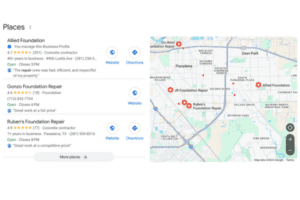The Americans with Disabilities Act is a civil rights law prohibiting discrimination against disabled individuals in public. This law applies to employment, private and public spaces, local and state government, transportation, building codes, and telecommunication. In 2010, the Department of Justice amended the language in Title III to apply to website accessibility as well. There is currently a final ruling expected in 2018 that will set the official standard for businesses concerning website guidelines for ADA compliance. To ensure compliance, websites must ensure their pages are accessible to all, including users with disabilities. A set of accessibility standards were created by the World Wide Web Consortium. These Web Content Accessibility Guidelines , or WCAG 2.0, are broken down into four categories: Perceivable, Operable, Understandable, and Robust. Find out more about ADA compliance here.
Perceivable:
These principle concerns are for the senses consumers use while browsing the world wide web. Some users may have difficulties with one or more senses (eyesight, hearing, etc.) which could leave them reliant on assistive technology to browse websites. This category gives recommendations such as adding captions to videos, and allowing font-size changes. For example: if the font size on your website is increased, does the webpage structure stay intact or is the page altered in a way that it loses structure or readability? To test this, increase the font size on your site by using the keyboard shortcut control (or command for mac) – plus. The guidelines also recommend contrast minimums in text and images, and adding alt text to images unless the images are solely for decoration. Users must be able to hear or see your content depending on the technology they use.
Operable:
This principle concerns the actions people use when browsing the internet. It requires keyboard-only navigation and puts restrictions on time limits for users with sight or movement impairments. These guidelines ensure your website does not create functionality issues for your users. Content must also be designed in a way which is not known to cause seizures. It must be clearly navigable and usable.
Understandable:
This principle states your website must have simple instructions, clear terms, and explain complex interactions. The guidelines in this category include the following:
- The language of the page should be programmatically identifiable.
- Website navigation must be consistent.
- Clear instructions must be provided when user input is required.
- Text content must be readable and understandable.
- Pages must operate and appear in predictable and understandable ways.
Robust:
This principle requires your website to be interpreted correctly and usable by any assistive technology. Your website must be consistent with current industry standards, such as clean HTML and CSS. Semantic HTML tags should be used where possible and your coding should be properly validated so any assistive technology can understand and utilize the provided content. When working on website optimization, it’s important for content writers to think about accessibility when creating content, pages, and headings.
Some of these guidelines will require additional technical work. However, you will create user-friendly content and reach all your audience. These new requirements for ADA compliance may present a bit of a challenge when designing your website. While very technical in design, these guidelines will remove barriers and allow websites to be accessible to all. Our website specialist has designed a checklist which you can download here. This compliance checklist will assist you in your website building as you become familiar with these WCAG requirements. Another great resource you may find helpful is the Web Accessibility Evaluation Tool to test your current accessibility. Type your URL into the search bar and the tool will highlight any areas of concern on your website. While we wait on the decisions from the Department of Justice concerning ADA compliance, it’s a great idea to educate and prepare ourselves for the upcoming changes.















